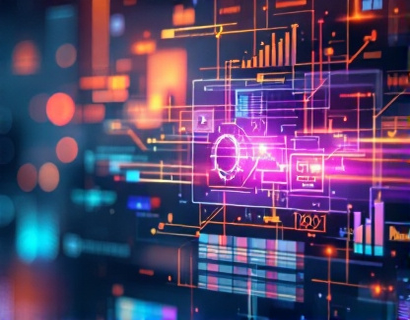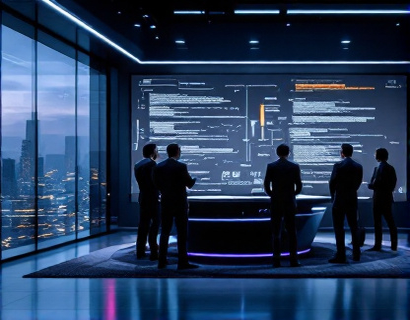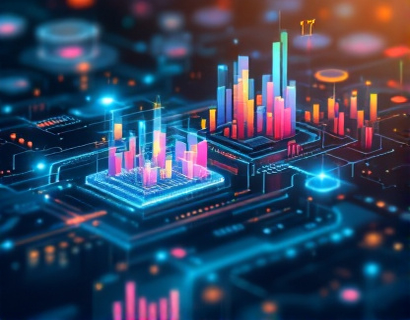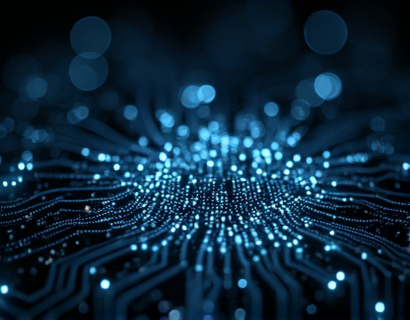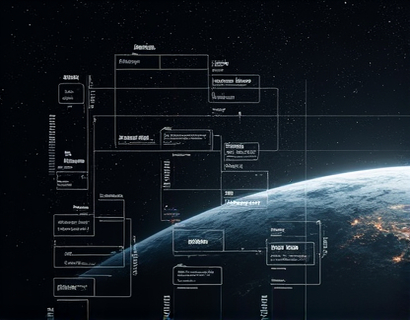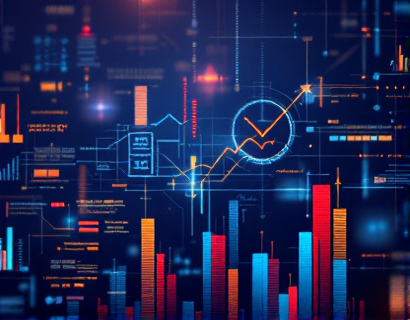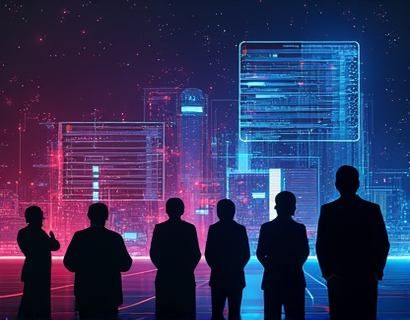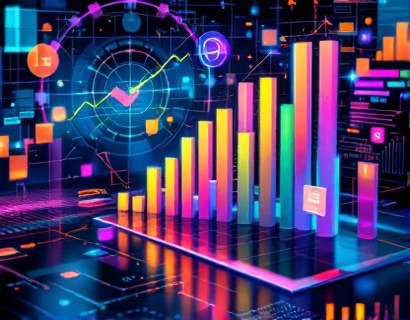Decentralized Productivity Revolution: Harnessing AI and Crypto for Next-Gen App Solutions
The digital landscape is undergoing a profound transformation, driven by the convergence of artificial intelligence (AI) and cryptocurrency. This revolution is not just about adopting new technologies but about reimagining how we approach productivity, collaboration, and innovation. For tech professionals and early adopters, this convergence opens up a world of possibilities, enabling the creation of next-generation applications that are more efficient, secure, and user-friendly. This article delves into the intricacies of this decentralized productivity revolution, exploring how AI and cryptocurrency are reshaping app innovation and enhancing user experiences.
Understanding Decentralization in App Development
Decentralization, at its core, refers to the distribution of functions, powers, and responsibilities across a network, rather than concentrating them in a single entity. In the context of app development, this means moving away from centralized servers and platforms to a more distributed architecture. This shift has several advantages. Firstly, it enhances security by reducing the risk of a single point of failure. Secondly, it promotes transparency and trust, as all transactions and data exchanges are recorded on a public ledger. Lastly, decentralization empowers users by giving them more control over their data and applications.
The decentralized approach is particularly relevant in the realm of productivity apps. Traditional productivity tools often rely on centralized servers to store and process data, which can lead to issues such as data breaches, downtime, and limited scalability. Decentralized apps (dApps), on the other hand, use blockchain technology to create a more robust and resilient infrastructure. This ensures that user data is secure and that the application remains available even if parts of the network go down.
AI: The Brain Behind Decentralized Productivity
Artificial intelligence plays a crucial role in the decentralized productivity revolution. AI algorithms can process vast amounts of data, identify patterns, and make predictions, all of which are essential for creating intelligent and efficient applications. In a decentralized environment, AI can be used to optimize various aspects of app functionality, from user experience to backend operations.
One of the key applications of AI in decentralized productivity is in the area of smart automation. AI can automate routine tasks, such as data entry, scheduling, and report generation, freeing up users to focus on more strategic activities. For instance, an AI-powered dApp can analyze user behavior and preferences to suggest optimal workflows, automate repetitive tasks, and even predict potential bottlenecks before they occur.
Moreover, AI can enhance the security and privacy of decentralized applications. Machine learning algorithms can detect and mitigate potential security threats in real-time, ensuring that user data remains protected. This is particularly important in a decentralized ecosystem where data is distributed across multiple nodes, increasing the surface area for potential vulnerabilities.
Cryptocurrency: The Fuel for Decentralized Transactions
Cryptocurrency is the digital equivalent of cash in the decentralized world, providing a secure and transparent medium of exchange. In the context of productivity apps, cryptocurrency offers several benefits. First, it eliminates the need for intermediaries, reducing transaction costs and increasing the speed of financial transactions. Second, it ensures transparency, as all transactions are recorded on a public blockchain, making it easier to track and verify activities.
For decentralized productivity applications, cryptocurrency can serve as a native token, used for incentivizing users, rewarding contributions, and facilitating peer-to-peer transactions. For example, a productivity platform could introduce a token that users earn by completing tasks, contributing to the community, or providing valuable insights. These tokens can then be used to access premium features, purchase services, or even trade with other users within the ecosystem.
Furthermore, cryptocurrency can enable new business models and revenue streams for app developers. By integrating blockchain-based tokens, developers can create tokenized economies within their applications, fostering a sense of community and engagement. This not only enhances user retention but also creates a sustainable financial model for the app.
Synergy Between AI and Cryptocurrency
The true power of the decentralized productivity revolution lies in the synergy between AI and cryptocurrency. When combined, these technologies can create applications that are not only more efficient and secure but also more intelligent and user-centric. Here’s how this synergy manifests in various aspects of app development:
- Enhanced User Experience: AI can analyze user data to provide personalized recommendations and automate tasks, while cryptocurrency ensures seamless and secure transactions. For instance, an AI-driven dApp can suggest the most efficient way to complete a project based on user habits and then facilitate the payment for any resources or services used, all within a single, integrated platform.
- Decentralized Data Management: AI algorithms can optimize data storage and retrieval on a decentralized network, ensuring that data is accessible and secure. Blockchain technology provides a tamper-proof ledger for data integrity, while AI can manage data sharding and indexing to improve performance.
- Smart Contracts for Automation: Smart contracts, powered by AI, can automate complex workflows and ensure that transactions are executed only when predefined conditions are met. This reduces the need for manual intervention and minimizes the risk of errors or fraud.
- Tokenized Incentives: AI can dynamically adjust token rewards based on user contributions and app performance, creating a more engaging and motivating environment. This token-based incentive system can drive user participation and foster a collaborative community.
Case Studies: Real-World Applications
To better understand the potential of decentralized productivity applications, let’s explore a few real-world examples:
Project A: Decentralized Task Management
Project A is a decentralized task management dApp that uses AI to optimize task allocation and cryptocurrency to incentivize task completion. Users can create and assign tasks, which are then distributed across the network based on AI-driven recommendations. Completed tasks are verified and rewarded with native tokens, which can be used within the platform or traded externally. This approach not only ensures efficient task management but also creates a motivating environment for users.
Platform B: Collaborative Content Creation
Platform B is a decentralized content creation and distribution platform that leverages AI for content curation and cryptocurrency for monetization. Authors and creators can publish their work on the platform, and AI algorithms curate and promote high-quality content to users. Creators earn tokens based on engagement metrics, such as likes, shares, and comments. This token economy incentivizes high-quality content creation and fosters a vibrant community of contributors.
Application C: Decentralized Project Management
Application C is a decentralized project management tool that uses AI to streamline project workflows and cryptocurrency to manage resource allocation. Project managers can define project parameters and AI optimizes the assignment of tasks and resources based on team members' availability and expertise. Transactions related to resource usage and payments are handled through smart contracts, ensuring transparency and security.
Challenges and Considerations
While the potential of decentralized productivity applications is vast, there are several challenges and considerations that need to be addressed:
- User Adoption: Convincing users to switch from traditional centralized applications to decentralized alternatives requires education and demonstration of clear benefits. User experience must be seamless, and the value proposition must be compelling.
- Scalability: Decentralized applications must be designed to handle large volumes of users and transactions without compromising performance. This involves optimizing blockchain networks and implementing efficient data management strategies.
- Regulatory Compliance: The use of cryptocurrency in applications must comply with local and international regulations. Developers need to stay informed about legal requirements and ensure that their applications meet all necessary standards.
- Interoperability: Ensuring that decentralized applications can interact seamlessly with other blockchain networks and traditional systems is crucial for widespread adoption. Standardization and collaboration among developers can help address this challenge.
Future Outlook
The future of decentralized productivity applications is bright, with ongoing advancements in AI and blockchain technology paving the way for even more innovative solutions. As more developers and businesses recognize the potential of this decentralized productivity revolution, we can expect to see a surge in new and improved applications.
One area of future development is the integration of advanced AI techniques, such as natural language processing and computer vision, to create more intuitive and user-friendly interfaces. Additionally, the exploration of layer 2 solutions and cross-chain interoperability will enhance the scalability and flexibility of decentralized applications.
In conclusion, the convergence of AI and cryptocurrency is transforming the landscape of productivity apps, offering a decentralized, secure, and intelligent alternative to traditional solutions. For tech professionals and early adopters, embracing this revolution can lead to significant improvements in efficiency, collaboration, and innovation.



